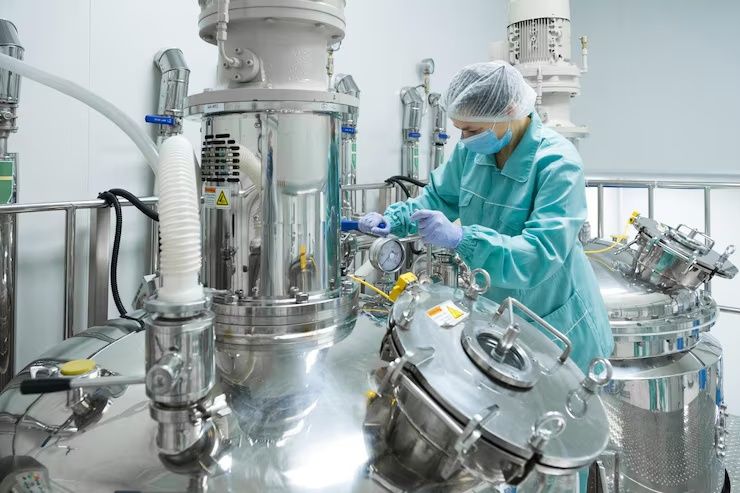A Guide to Understanding Bioreactors for Biopharmaceutical Applications
Bioreactors are specialized systems designed to support the controlled growth of cells, microorganisms, or tissues in an environment that mimics natural conditions. In biopharmaceutical applications, they serve as the backbone of modern drug development, enabling the large-scale production of therapeutic proteins, vaccines, and monoclonal antibodies
The concept of the bioreactor came into prominence when pharmaceutical science shifted from relying on small-molecule drugs to biologics. Unlike chemical synthesis, which can be replicated in a traditional lab setup, biologics require living systems to be cultivated in tightly regulated environments. This is where bioreactors find their essential role: they provide sterile, monitored conditions for sensitive biological processes to thrive.

Importance
The relevance of bioreactors in today’s healthcare landscape cannot be overstated. With chronic illnesses and global health crises creating urgent demand for effective treatments, bioreactors enable the production of therapies at a scale that meets public need.
For patients, these technologies directly influence access to advanced medicines such as insulin, vaccines, and cell-based therapies. For pharmaceutical researchers, bioreactors offer reproducibility, quality control, and scalability—factors that are critical for regulatory approval.
The industry also benefits economically. Efficient bioreactor systems reduce development timelines and minimize production failures, which lowers risks during clinical trials. This not only affects companies but also extends to governments and healthcare systems that depend on timely access to innovative treatments.
Recent Updates
The field of bioreactors has seen significant innovation in the past two years, driven by global demand for faster, more reliable biologic production.
-
Single-use bioreactors (2023–2024): Increasingly adopted for their flexibility and reduced cleaning requirements. They allow quick turnaround between production cycles, making them ideal for fast-paced vaccine development.
-
Automation and AI integration: Smart sensors and artificial intelligence are now used to monitor cell growth and adjust parameters in real time, improving accuracy and reducing operator errors.
-
Continuous manufacturing: Instead of relying on batch processes, continuous systems provide a steady output of biologics, boosting efficiency and lowering waste.
-
3D tissue culture applications: Emerging in 2023, bioreactors have been adapted to support tissue engineering and regenerative medicine, showing promise for organoid development.
-
Sustainability focus: Energy-efficient systems and eco-friendly designs are becoming important, with manufacturers integrating green technology into their operations.
These updates indicate that bioreactors are evolving beyond simple production systems, becoming intelligent, adaptable platforms for future therapies.
Laws or Policies
Bioreactors, given their role in producing substances for human use, are subject to strict oversight by global and national authorities.
-
FDA (United States): Oversees current Good Manufacturing Practices (cGMP) that directly influence bioreactor operation and validation.
-
EMA (European Union): Enforces guidelines under Good Manufacturing Practice for medicinal products derived from biological processes.
-
WHO Guidelines: Provide a framework for vaccine production standards, which heavily rely on bioreactor-based systems.
-
Environmental regulations: Countries such as Germany and Japan emphasize sustainability policies, requiring waste management and safe disposal of byproducts from bioreactor facilities.
-
Data integrity laws: Since modern systems use digital monitoring, compliance with data privacy and audit trail regulations (such as GDPR in the EU) is essential.
These policies ensure that bioreactor-produced medicines are safe, effective, and environmentally responsible.
Tools and Resources
A wide range of resources support researchers, students, and professionals working with bioreactors:
-
Tool platforms:
-
BioSPX and MODDE for process simulation and optimization
-
Cloud-based bioprocess control systems for remote monitoring
-
-
Educational resources:
-
Online learning portals like Coursera and MIT OpenCourseWare offer biotechnology and bioprocess engineering modules.
-
The American Society for Microbiology provides webinars and research updates.
-
-
Industry reports:
-
Publications from Deloitte, Statista, and MarketsandMarkets highlight growth forecasts and technological adoption.
-
-
Professional organizations:
-
International Society for Pharmaceutical Engineering (ISPE) and BioProcess International Conference serve as hubs for networking and knowledge sharing.
-
-
Design and visualization tools:
-
Simulation platforms such as COMSOL help visualize fluid dynamics within bioreactors.
-
These resources give learners and professionals the opportunity to deepen their understanding and stay informed about innovations in the field.
FAQs
What is the role of a bioreactor in biopharmaceutical production?
A bioreactor provides a controlled environment where cells or microorganisms can grow and produce biologically active substances used in medicine.
Are all bioreactors the same?
No. There are stirred-tank bioreactors, airlift reactors, hollow-fiber systems, and single-use models, each designed for specific applications.
Why are single-use bioreactors gaining popularity?
They minimize cleaning and validation requirements, reduce cross-contamination risks, and offer faster setup, making them highly efficient for rapid development cycles.
Do regulations vary by country?
Yes. While global standards exist, each country enforces specific requirements based on its regulatory authority, such as FDA in the U.S. or EMA in the European Union.
Can bioreactors support regenerative medicine?
Yes. Advanced bioreactor systems are increasingly used for tissue engineering and stem cell research, paving the way for regenerative therapies.
Conclusion
Bioreactors have transformed the pharmaceutical landscape, bridging the gap between scientific discovery and real-world healthcare solutions. From vaccines to cell therapies, they represent the foundation of biologics production and continue to evolve through technology-driven innovation.
Recent advances—such as single-use systems, AI integration, and continuous manufacturing—demonstrate their growing sophistication. Combined with strict regulatory frameworks and sustainability goals, bioreactors are becoming not just tools for medicine, but key players in shaping the future of biotechnology.
For students, researchers, or policymakers seeking to understand modern healthcare, exploring how bioreactors function and adapt is essential. They symbolize more than equipment; they represent progress in global health, science, and technology.
